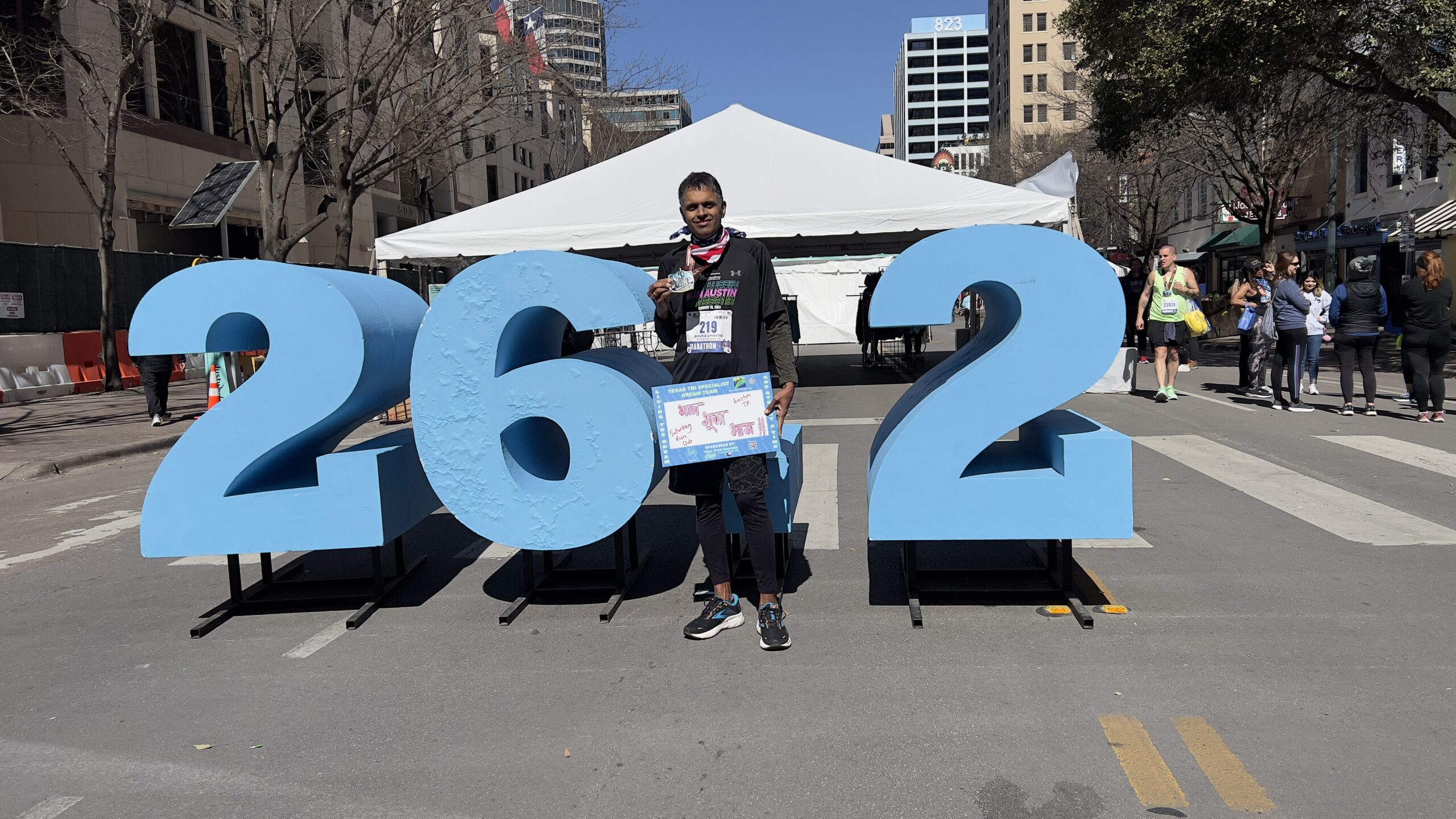Adopting the philosophy of ‘mind over matter’ can have a powerful impact on many aspects of life. In many instances of illness or injury, people can often conjure up herculean efforts to boost their physical and mental well-being, alongside therapeutic intervention, to overcome a medical or health challenge.
This is something that our 52-year-old patient Bhushan Karle was able to accomplish when he transitioned from living with type 2 diabetes (T2D) heavily reliant on medication and insulin to taking charge of his health and becoming a marathoner who now needs minimal medications.
Bhushan’s Story
Bhushan was diagnosed with T2D in his early thirties. His parents also had diabetes, and he remembers them needing heavy doses of insulin while growing up in India.
His initial reaction to the diagnosis was one of disappointment in himself for not taking better care of his health after seeing how his parents suffered from this condition. Bhushan’s first treatment involved a combination of insulin and many pills until he met Texas Diabetes endocrinologist and diabetes specialist Dr. Keta Pandit.
She re-evaluated him and explored a variety of medications before eventually weaning him off of an insulin pump due to complications.
Taking Control of his Health
Once he got off his pump, Bhushan made a conscious decision to radically shift his mindset and take better control of his health. This started with making small efforts at first, like getting back into sports that he always loved as a child. Regular exercise is highly beneficial for those with diabetes to help regulate blood sugars levels and maintain a healthy weight and blood pressure.
Although his initial goal to exercise more was a step in the right direction, it wasn’t resulting in the changes he wanted to see. He was able to lower his A1C, but it still was not decreasing as much as he had hoped to make a significant difference.
Adopting a Running Regimen
Deciding that he wanted to be more aggressive with his physical activity, Bhushan started running with a group of friends in his community.
With this group, he was inspired to run a marathon, like the many others who were a part of it. He enlisted the help of a coach, Dr. Mohan Achwal, who armed Bhushan with a spreadsheet to track his training and food intake. As a data analyst, this method really spoke to him and motivated Bhushan to chart and follow through with his progress.
One big hurdle that Bhushan encountered while training for the marathon was not knowing what to eat. Runners need plenty of carbohydrates to fuel their training, but carbs can be dangerous for people living with diabetes and maintaining healthy AIC levels.
Dr. Pandit, a runner herself, reminded Bhushan that his first intention to become a runner was to find a sustainable exercise plan that could support his lifestyle and help him control his diabetes. She encouraged him to avoid over training and fuel his body while keeping in mind that his pancreas will not respond to high carb meals the way his fellow runner friends’ do.
“While insulin resistance improves with weight loss and exercise, beta cell function from pancreas doesn’t recover to a point where high carb meals can be consumed without close attention to glucose levels,” explains Dr. Pandit. “I encouraged him to candidly share with his friends that his plans will vary given his health condition and limitations.”
Bhushan took that advice to heart and found his own journey empowering rather than a limitation to his goals. His mindset shifted and his physical and mental endurance improved.
He eventually ran his first half-marathon in 2023 and completed his first full marathon in 2024.

Bhushan shares that having Dr. Pandit and the staff at Texas Diabetes support helped encourage him along the way.
“A doctor who empathizes with patients and an office that is collaborative is very important to have as part of your team,” he says.
Supporting Your Goals
Bhushan believes that anyone can make lifestyle changes with the right mindset. Tips that he offers for anyone with diabetes who wants to make an impactful change on their condition, which could mean the difference between taking insulin or not, are to:
- Make eating bad/unhealthy food difficult or out of reach
- Enlist a partner in your health and fitness goals to keep you accountable
- Find a coach to help guide you through your health/fitness journey
- Replace regular bread with better options such as those that are low-glycemic, or made with whole or sprouted grains
- Start gradually, even if it is only walking, and add more intensity from there
Dr. Pandit recommends finding a diet and exercise plan that is sustainable and enjoyable so that it does not feel like a chore.
“To commit to a full lifestyle change, I encourage my patients to take an inward journey to find what truly brings them joy when it comes to an exercise plan – biking, hiking, running, yoga, pilates, gym memberships, group training and fitness plan, swimming, or joining a sport team,” she says.
“The goal is to find something for fitness that is enjoyable, not to win a race or a medal,” shares Dr. Pandit. “Living with diabetes and achieving that level of lifestyle change is a medal.”
Today, Bhushan has made such huge strides in staying active and eating well that his diabetes maintenance is minimal, and he has in effect, reversed many of the most serious side effects of his condition. He currently works closely with Dr. Pandit and uses a continuous glucose monitor (CGM) to watch his blood sugar levels and maintain his life goals.
Contact Us to Help Manage Your Diabetes and Thyroid Conditions
If you’d like to schedule an appointment with one of our specialists at Texas Diabetes & Endocrinology and discover how our diabetes services and other endocrinology therapies can help you lead a full and active life, please contact us at (512) 458-8400 or request an appointment online.
Don’t forget to follow us on Facebook and Instagram and check back with us each month as we provide you helpful wellness and health information.



